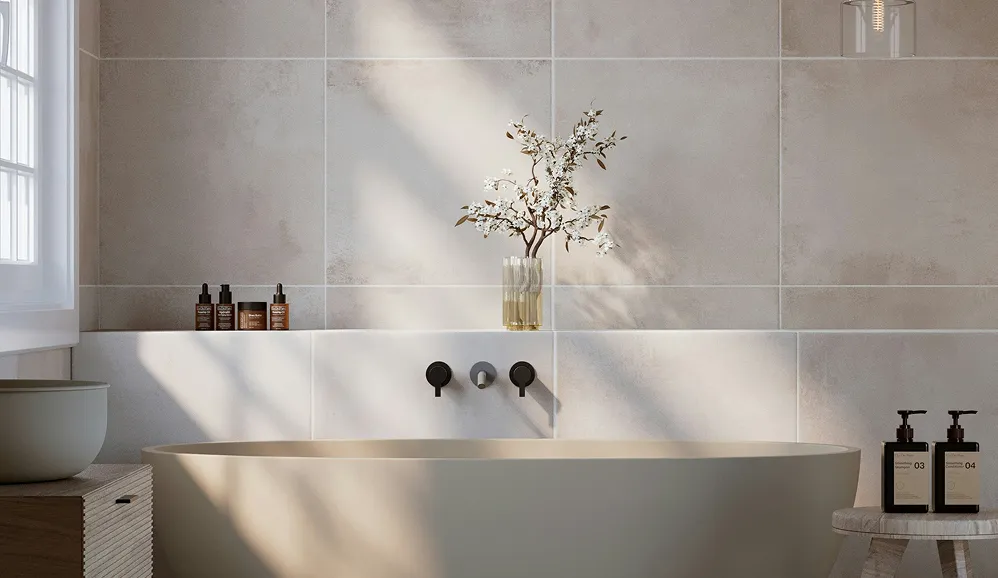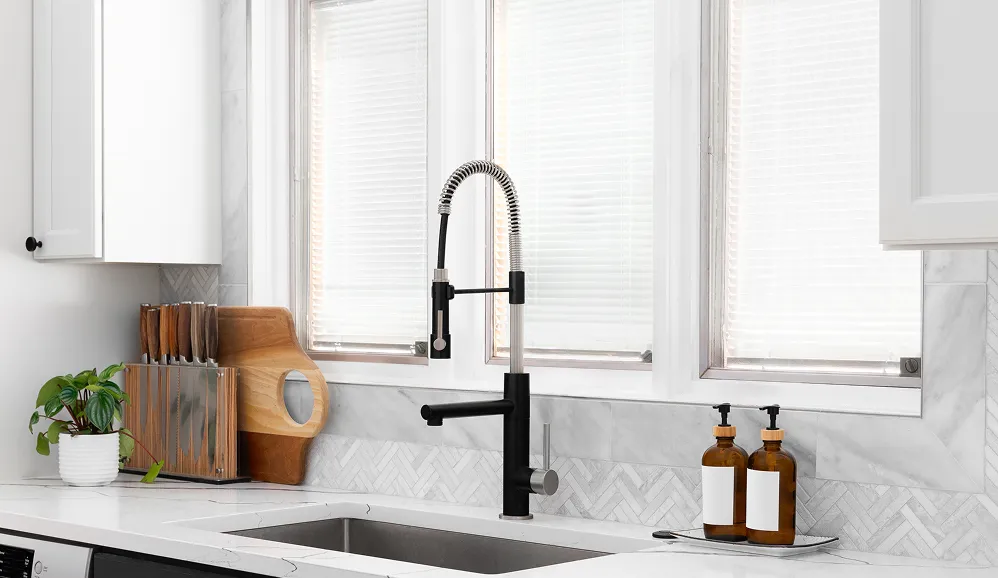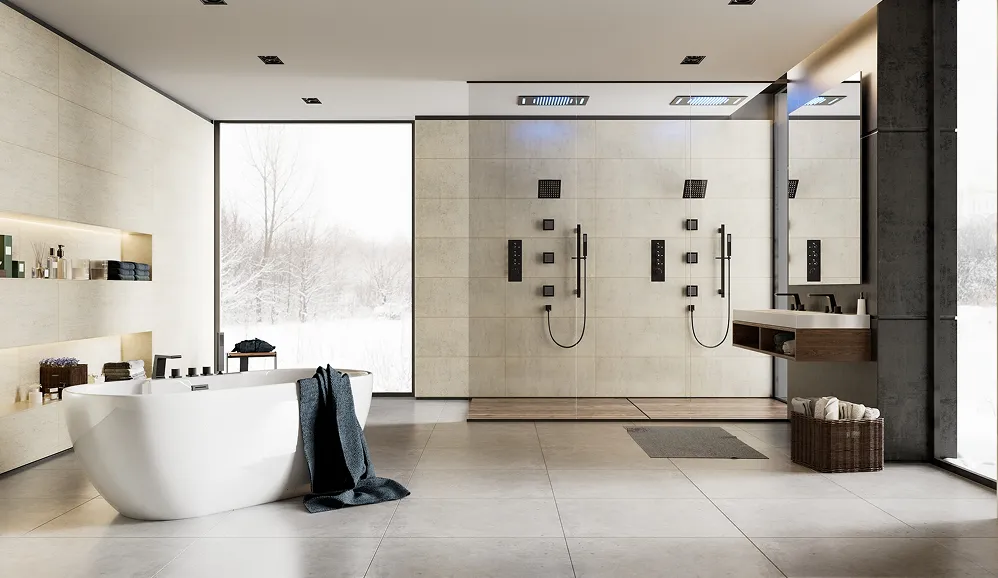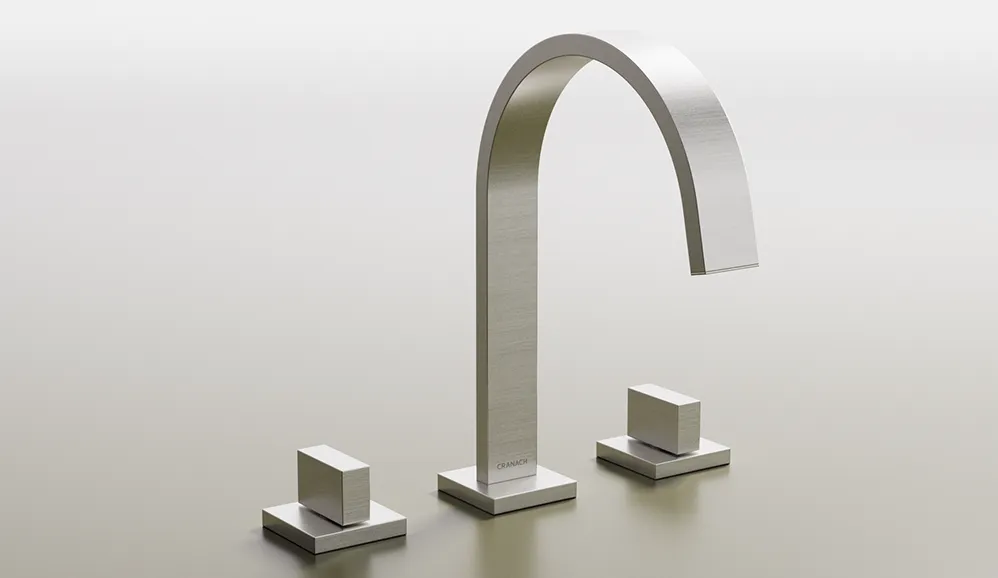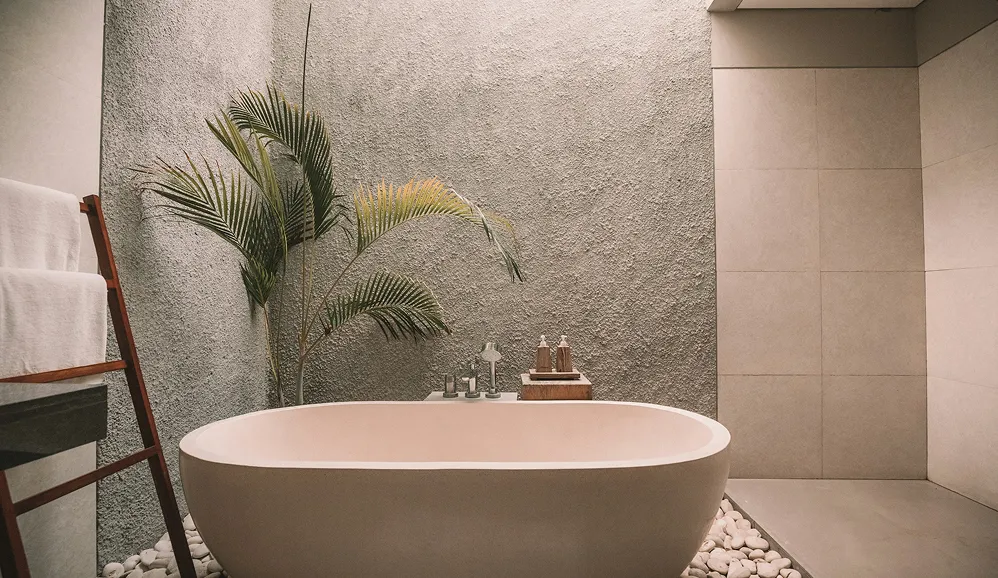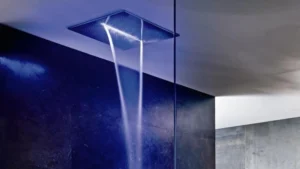The whole hot or cold shower after gym debate really boils down to what you want to accomplish right after you finish your workout. There’s no single right answer, just a better choice for your specific goal.
If you’ve just pushed through a brutal high-intensity session and need to tackle inflammation and muscle soreness head-on, a cold shower is your best bet. But if your aim is to unwind, loosen up stiff muscles, and help your body with long-term repair, then a warm shower is the way to go.
It all depends on the workout you just did and what your body needs most in that moment.
Understanding the Core Debate Hot vs Cold Showers
So, how do you decide? It’s all about understanding the very different ways your body reacts to heat versus cold. Each one sets off a unique physiological chain reaction that can either supercharge your recovery or slow it down, depending on what you’re trying to achieve.
Hitting your body with cold water triggers something called vasoconstriction—it’s a fancy term for your blood vessels narrowing. This is fantastic for reducing immediate inflammation, pushing metabolic byproducts like lactic acid out of your muscles, and keeping swelling down. Think of it like a full-body ice pack for your muscles.
On the flip side, a hot shower does the exact opposite. It causes vasodilation, which means your blood vessels open up. This ramps up blood flow, rushing more oxygen and nutrients to your tired muscles, which is perfect for soothing that deep-seated stiffness and improving your overall flexibility.
Comparing Key Recovery Factors
To make this super clear, let’s break down how a hot or cold shower stacks up against common recovery goals.
| Recovery Factor | Cold Shower (Vasoconstriction) | Hot Shower (Vasodilation) |
|---|---|---|
| Inflammation Reduction | High – Constricts blood vessels to immediately reduce swelling and inflammation. | Low – Can actually increase inflammation in the short term, especially if you have an acute injury. |
| Muscle Soreness (DOMS) | Effective for immediate relief by numbing nerve endings and reducing inflammation. | Better for long-term stiffness and promoting muscle relaxation. |
| Blood Circulation | Temporarily reduces surface blood flow to redirect it to core organs. | Increases blood flow to muscles, delivering oxygen and nutrients for repair. |
| Mental Effect | Invigorating and alerting, boosts focus and energy levels. | Calming and relaxing, can help reduce stress and improve sleep quality. |
Ultimately, choosing a hot or cold shower after gym should be a strategic part of your cool-down. While this debate is a cornerstone of any good gym routine, remember that a shower is just one piece of the puzzle. It’s always a good idea to incorporate smarter post-workout recovery strategies for a more complete approach.
And if you want to get the most out of your entire gym hygiene routine, check out our guide on showering at the gym. This will help you see the bigger picture and make sure every part of your recovery is working for you.
How Cold Showers Impact Post-Workout Recovery
Jumping into a cold shower after a grueling workout is a ritual many athletes live by, and it all comes down to a process called vasoconstriction. When cold water hits your skin, your blood vessels tighten up. This simple reaction is the main reason why the hot or cold shower after gym debate so often lands on the “cold” side for immediate recovery.
This narrowing of the blood vessels is a game-changer for reducing inflammation and swelling in your muscles, especially after high-impact stuff like a long run or a tough HIIT session. You can think of it as a full-body ice pack. It helps numb those sore spots and flush out metabolic junk like lactic acid that builds up and makes you ache the next day.
But here’s the thing: the science isn’t totally settled. While cold water immersion has been a go-to recovery trick for years, the research is a bit all over the place. For instance, a 2013 study in the Journal of Strength and Conditioning Research on runners didn’t find any major impact from ice baths on their muscle soreness. On the other hand, plenty of other studies show cold water does offer benefits compared to just sitting around, which tells us that how you respond can be pretty individual.
Key Benefits of a Post-Workout Cold Plunge
Beyond just tackling muscle soreness, a cold shower brings a few other perks to the table that really help with overall recovery and well-being.
- Reduced Muscle Inflammation: By constricting your blood vessels, cold water directly fights the inflammatory response that kicks in after a tough workout. This helps cut down on swelling and tissue breakdown.
- Decreased DOMS Perception: The cold acts as a natural pain reliever, numbing the nerve endings in your muscles. This can make a huge difference in how you feel that delayed onset muscle soreness (DOMS) in the 24 to 48 hours after your workout.
- Increased Alertness: That jolt of cold water isn’t just in your head. It can trigger a rush of adrenaline that leaves you feeling focused, sharp, and ready to take on the rest of your day.
The bottom line is this: a cold shower isn’t a magic fix for building muscle, but it’s fantastic for managing immediate post-workout pain and swelling. That makes it a seriously valuable tool for anyone trying to recover quickly between training sessions.
Of course, to get the full therapeutic effect, your shower needs to be working right. A clean showerhead is key for the consistent water flow and pressure you need for a proper cold rinse. For some quick tips on keeping your gear in great shape, check out our guide on how to clean your shower head with vinegar. It’s a simple bit of maintenance that can make all the difference in your recovery routine.
Why a Hot Shower Can Accelerate Muscle Repair
While cold showers get a lot of the glory for their instant, inflammation-fighting power, the debate over a hot or cold shower after gym session takes a sharp turn toward heat when your goal is deep muscle repair and serious relaxation. A good hot shower kicks off a physiological process called vasodilation, which is just a fancy way of saying your blood vessels widen. This simple response is a massive advantage for recovery.
This widening of your blood vessels dramatically boosts circulation. Think of it as opening up a superhighway for oxygen and vital nutrients to rush to your tired, overworked muscle tissues. It’s like an express delivery service dropping off fresh building blocks right where your body needs them most. This increased blood flow helps speed up the natural healing process, soothe away stiffness, and improve the pliability of your muscles.
That therapeutic warmth isn’t just about feeling good—it’s actively working to melt away tension. If you’re someone who constantly battles post-workout stiffness or muscle tightness, a hot shower is easily the better choice. It helps your muscles finally relax, which can also lead to better sleep—a critical, and often overlooked, piece of any solid recovery plan.
Evidence Supporting Hot Water for Muscle Strength
New findings are starting to question the long-held belief that cold is always king for post-workout recovery. A 2024 study in the Scandinavian Journal of Medicine & Science in Sports looking at active men after intense training found that while both hot and cold water immersion helped bring back overall muscle strength within 48 hours, the group using hot water saw some unique, game-changing benefits.
The study showed that only the participants who took a hot bath saw significant improvements in explosive muscle strength and a greater reduction in muscle soreness. This suggests that for athletes zeroed in on performance, heat may be more effective than cold at restoring force production and easing discomfort after a tough workout.
This is a really important distinction to make. While cold therapy might just numb the immediate pain, hot water therapy seems to actively help restore functional power to your muscles. That makes it an incredible choice after a demanding strength training day.
To really get the most out of these benefits, you need a shower system that delivers consistent, controlled heat. CRANACH‘s shower systems with Farne collection are engineered to give you this exact therapeutic experience, letting you dial in the perfect temperature for optimal muscle repair. A reliable system like this turns a routine shower into a targeted recovery session. Take a look at the CRANACH shower systems with Farne collection to see how the right equipment can level up your fitness goals.
Choosing The Right Shower For Your Workout
So, you’ve just crushed a workout. What’s next? The decision between a hot or cold shower isn’t just about personal preference. It’s about strategy. The choice you make should directly support the physical demands you just put your body through. After all, recovery for a high-intensity interval session looks very different from what you need after a heavy lifting day.
Think of it this way: after an explosive HIIT workout or a long, grueling run, your main goal is to manage the immediate stress and inflammation. On the other hand, a strength training session aimed at building muscle is better served by promoting blood flow to help repair all that tissue you just worked so hard on.
Workout-Specific Recommendations
Let’s get practical and break down which temperature makes the most sense based on the exercise you just finished. This is where we move beyond what feels good and into what is good for strategic recovery.
- For High-Intensity and Endurance Workouts (HIIT, Running, CrossFit): Grab that dial and turn it to cold. These kinds of activities create a ton of metabolic stress and inflammation. A cold shower helps constrict your blood vessels, which is great for reducing swelling and flushing out metabolic waste in a hurry.
- For Strength Training and Bodybuilding (Weightlifting, Powerlifting): A hot shower is usually your best bet here. The whole point of lifting is to encourage muscle repair and growth. The warmth from the water opens up your blood vessels (vasodilation), ramping up blood flow and delivering all those essential nutrients and oxygen to your tired muscle fibers. This speeds up healing and helps improve flexibility.
- For General Fitness and Flexibility (Yoga, Pilates, Light Cardio): You’ve got a bit more freedom here. A lukewarm or warm shower can feel amazing, soothing muscles and helping you relax. If you want a little pick-me-up, a quick cool rinse at the end can leave you feeling refreshed without being too intense.
The real takeaway here is to match your shower’s temperature to your workout’s impact. Cold water is your go-to for fighting immediate inflammation from high-impact exercise. Hot water is perfect for supporting deep tissue repair and relaxation after you’ve been hitting the weights.
This handy visual breaks down how each shower type stacks up against key recovery metrics.
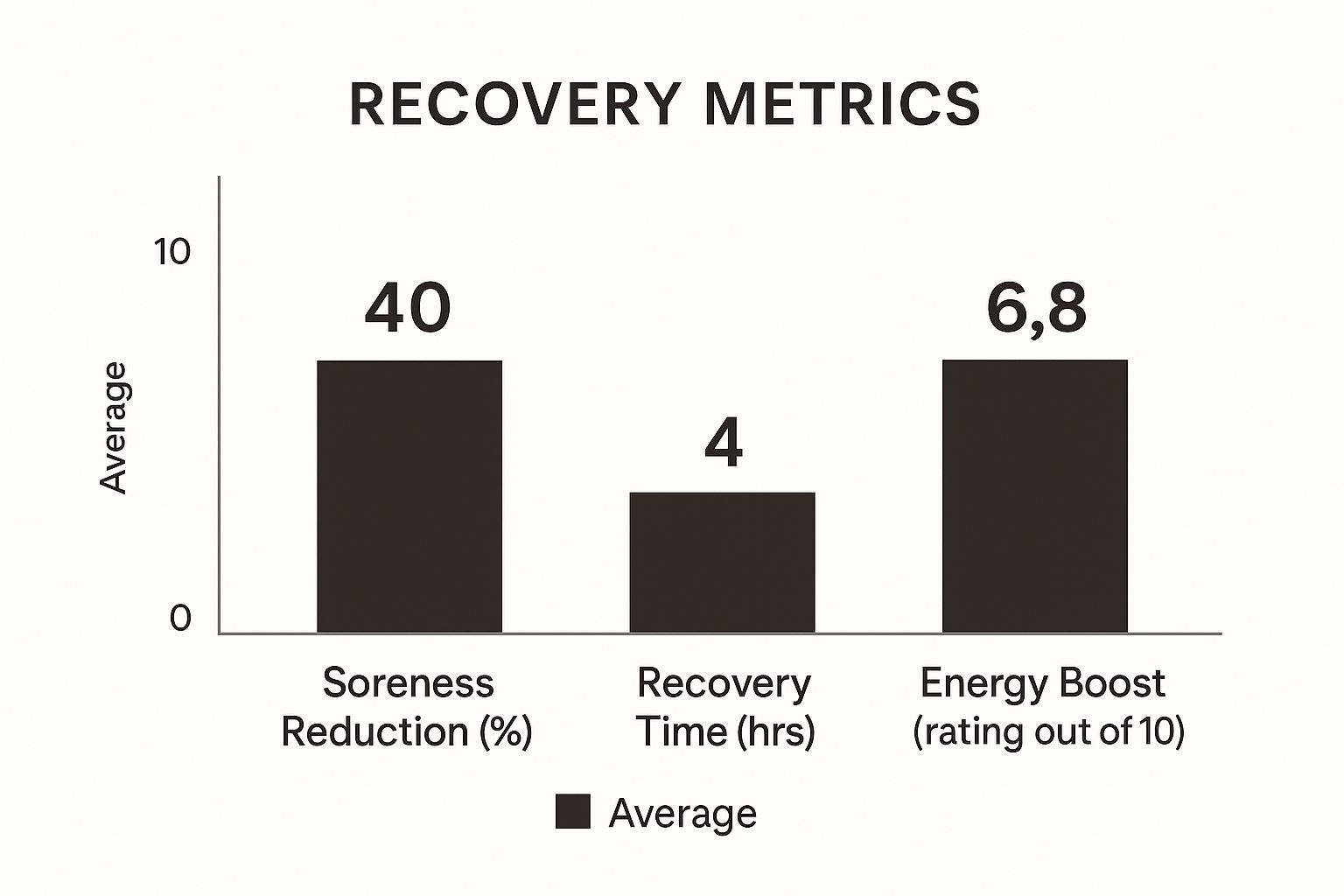
As you can see, cold showers give you that immediate jolt of energy, but hot showers really shine when it comes to reducing long-term soreness.
Hot vs Cold Showers: A Workout-Based Comparison
To make this crystal clear, let’s compare how hot and cold showers perform head-to-head across different recovery factors. This table breaks down the best use cases to help you pick the right temperature for your specific goals.
| Recovery Factor | Cold Shower Best Use Case | Hot Shower Best Use Case | Recommended Workout Type |
|---|---|---|---|
| Immediate Inflammation & Swelling | Quickly constricts blood vessels to reduce post-workout swelling and flush out waste products. | Can increase short-term inflammation, so it’s not ideal for acute soreness or injuries. | Endurance/HIIT |
| Muscle Stiffness & Tension | Less effective for deep-seated tightness and can sometimes make muscles feel more rigid. | Excellent for relaxing tight muscles, improving flexibility, and relieving delayed-onset muscle soreness (DOMS). | Strength Training |
| Energy & Alertness | Delivers a significant mental and physical jolt, boosting alertness and focus almost instantly. | Promotes relaxation and can make you feel sleepy, making it better for evening workouts. | Endurance/HIIT |
| Long-Term Muscle Repair | May slightly hinder muscle protein synthesis if used consistently right after strength training. | Enhances blood flow, which delivers crucial oxygen and nutrients to support muscle repair and growth. | Strength Training |
Ultimately, having a shower system that gives you precise control over the temperature is what makes all of this possible. A premium setup, like CRANACH‘s Farne collection shower systems, provides the versatility you need. You can effortlessly switch from a therapeutic warm stream to a crisp, cold rinse, tailoring your recovery to every single workout.
What If You Want the Best of Both? Meet Contrast Shower Therapy
Still torn between a hot or cold shower after gym sessions? You don’t have to choose. There’s a powerful middle-ground technique that athletes and wellness experts swear by: contrast shower therapy. It’s exactly what it sounds like—alternating between hot and cold water in a single shower to get the benefits of both.
Think of it as creating a “pump” for your circulatory system. The hot water opens up your blood vessels (a process called vasodilation), letting nutrient-rich blood rush in to help your muscles. Then, bam—the cold water hits, and those same vessels squeeze tight (vasoconstriction). This quick switch is thought to be incredibly effective at flushing out metabolic waste, like lactic acid, far better than sticking to just one temperature.
How to Do Contrast Shower Therapy the Right Way
Getting started is simple, but sticking to a proven routine is what delivers the results. The idea is to create a sharp temperature change your body can feel, without sending yourself into total shock.
Here’s the step-by-step method that works best:
- Start Warm: Ease into it with a comfortable warm shower for 3-4 minutes. This is all about relaxing your body and getting your muscles ready.
- Go Cold: Now, turn the dial to the coldest setting you can handle for a full 1 minute. Make sure to aim the water at the key muscle groups you just trained.
- Alternate: Switch back to hot water for another 3-4 minutes, then dive back into the cold for 1 minute.
- Repeat and Finish Cold: Run through this cycle 3-4 times, but always make sure your final blast is cold. That last cold rinse is key for locking in the anti-inflammatory effects.
This method is the ultimate compromise. You get the muscle-soothing relief from the heat and the inflammation-crushing power of the cold, all in one session. It’s a fantastic recovery tool for almost any kind of workout.
This technique is gaining ground because it really does seem to kickstart circulation and dull post-workout aches. Ultimately, whether you go hot, cold, or contrast depends on what you’re trying to achieve. Cold showers wake you up, hot showers calm you down, and contrast showers give you a bit of everything.
Just remember, a shower is one piece of the recovery puzzle—don’t forget about proper hydration and nutrition. You can discover more about expert recovery strategies to build out your full routine. And if you’re looking to take your shower experience to the next level, our guide on choosing the perfect shower head can help you find the right fit.
Optimizing Recovery with the Right Shower System
If you’re serious about mastering the hot or cold shower after gym routine, especially for more advanced stuff like contrast therapy, your equipment really starts to matter. This isn’t just about rinsing off. It’s about turning your shower into a strategic recovery tool.
Precise, fast temperature control is the key. You need a system that can deliver consistent heat or a sharp, cold blast on demand. That’s what separates a quick rinse from a truly therapeutic session. Investing in a quality setup makes all the difference, empowering you to take full control of your recovery right at home.
Elevate Your Post-Workout Ritual
For a truly exceptional experience, the CRANACH shower systems with Farne Collection are engineered for exactly this kind of performance. They feature thermostatic valves that lock in the exact water temperature you want, getting rid of those annoying and sometimes dangerous fluctuations. This lets you switch seamlessly between hot and cold without a second thought.
The multiple spray functions are a game-changer, too. You can switch from a gentle rainfall to a targeted massage jet, directing the flow right to your sorest muscle groups to enhance the therapeutic effects. If you really want to maximize your shower’s power, it also helps to know how to increase water pressure in your shower.
By integrating a versatile system like the Farne Collection, you’re not just showering; you are actively accelerating muscle repair and reducing inflammation with precision.
Of course, your shower is just one piece of the puzzle. A great recovery plan is holistic. To round out your post-workout regimen and really unlock your peak performance, check out these essential muscle recovery tips and build a routine that works for you.
Frequently Asked Questions About Post-Workout Showers
Navigating the world of post-workout recovery brings up plenty of questions. It’s totally normal. Here are some clear, practical answers to the most common ones we hear about choosing a hot or cold shower after gym sessions.
How Long Should I Wait to Shower After a Workout?
Give your body a moment to catch its breath. It’s best to wait about 20-30 minutes after you finish your workout before hopping in the shower.
This little cooldown window is crucial. It gives your heart rate and body temperature a chance to come back down to earth, preventing any unnecessary shock to your system. Use this time for some light stretching and, most importantly, rehydration.
Should I Avoid a Hot Shower If I Have a Sports Injury?
Yes, absolutely. If you’re dealing with a fresh injury like a muscle tear or sprain—anything that involves swelling—steer clear of hot showers for at least the first 48-72 hours. Heat will only make the inflammation worse.
Instead, a cold shower or applying ice directly to the area is your best bet. The cold helps constrict blood vessels to manage the swelling, a recommendation echoed by trusted resources like Healthline.
A key takeaway here is pretty simple: use cold for new injuries with swelling and heat for that nagging, chronic muscle stiffness. Listening to your body and understanding the type of injury is everything for an effective recovery.
Can I Take Contrast Showers Every Day?
For most people, contrast showers are perfectly safe for daily use, especially after a tough workout. They’re fantastic for boosting circulation and kickstarting recovery.
However, the golden rule is to always pay attention to how your body feels. If you start feeling dizzy or just overly uncomfortable, it’s a sign to adjust the temperatures or shorten the cycle. This kind of body awareness is important in all aspects of self-care. It’s the same principle as knowing how long after a tattoo you can shower normally—it’s all about listening to your body’s healing signals.
To truly get your recovery right, having the right equipment makes a world of difference. CRANACH‘s shower systems with Farne Collection give you the precise temperature control and versatile spray functions you need to turn your bathroom into a personal wellness spa. Explore the Farne Collection today and take your post-workout routine to the next level.

